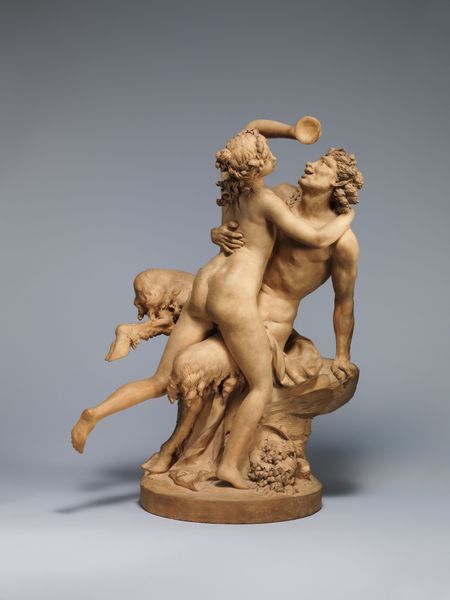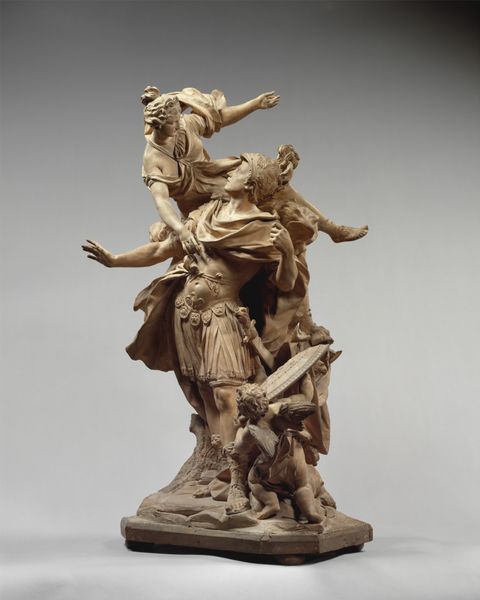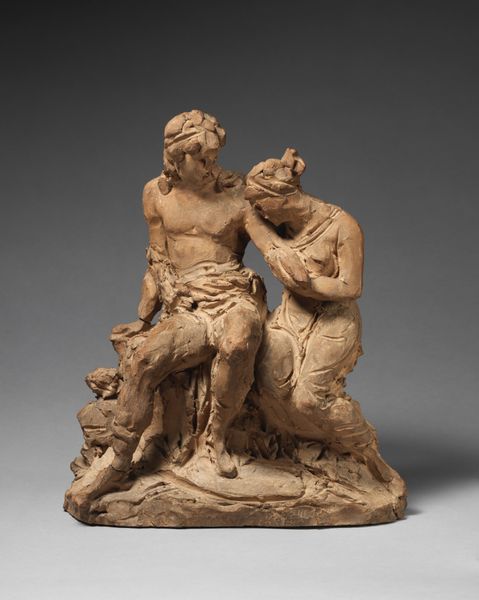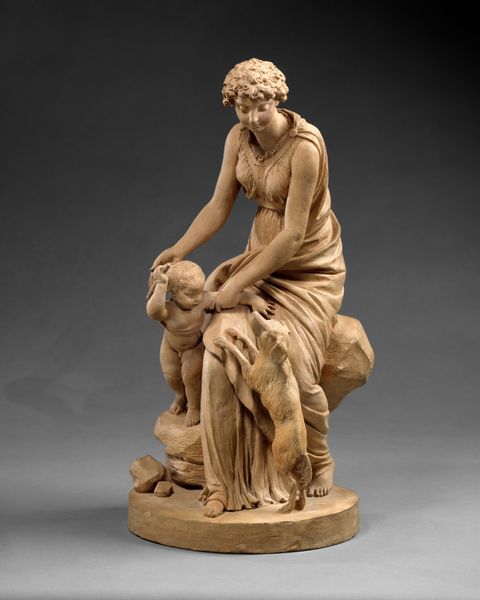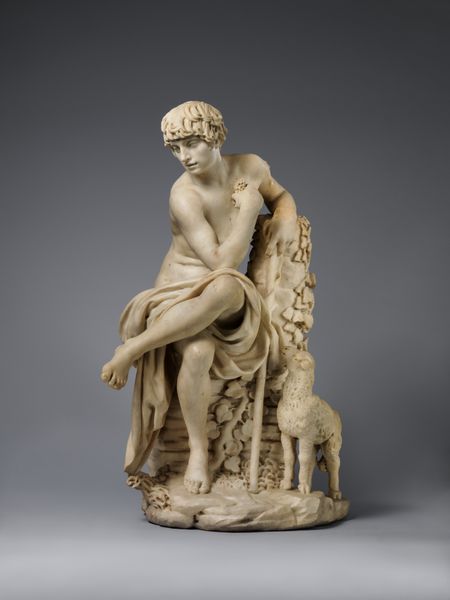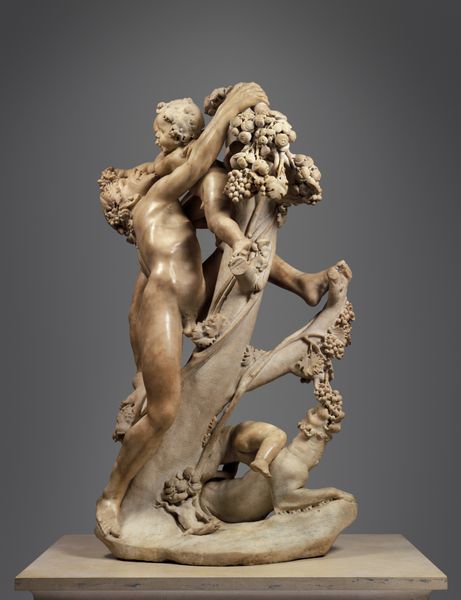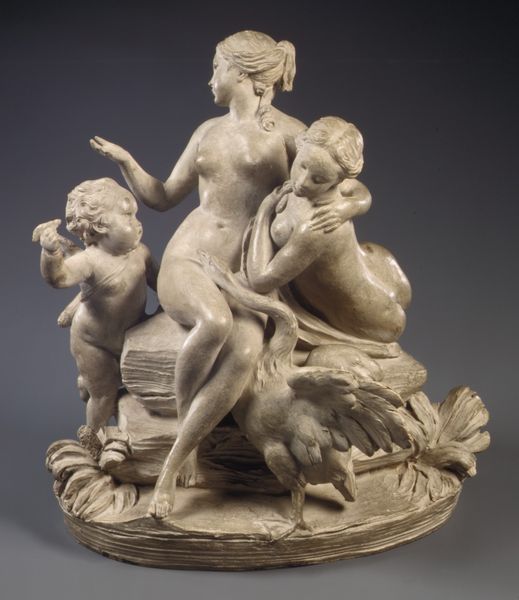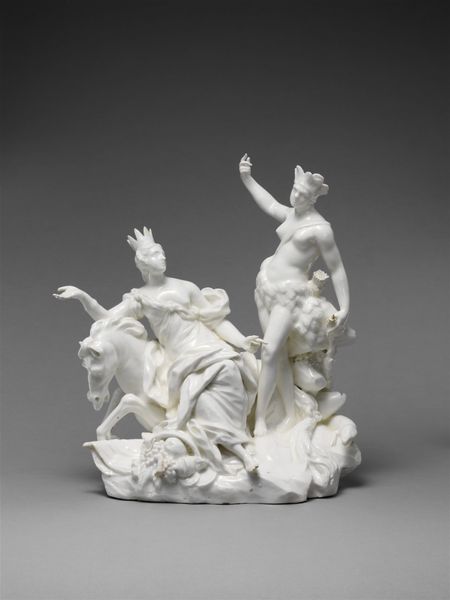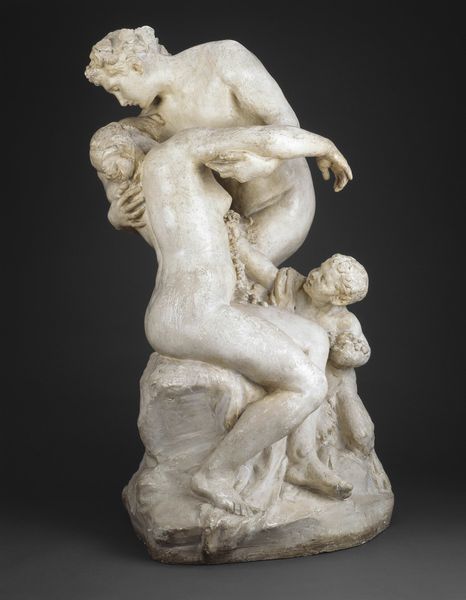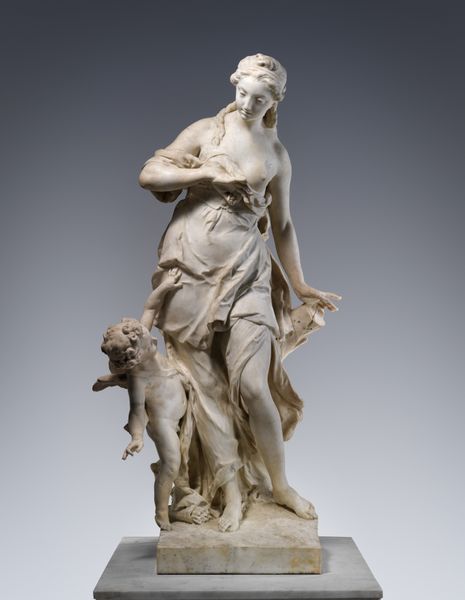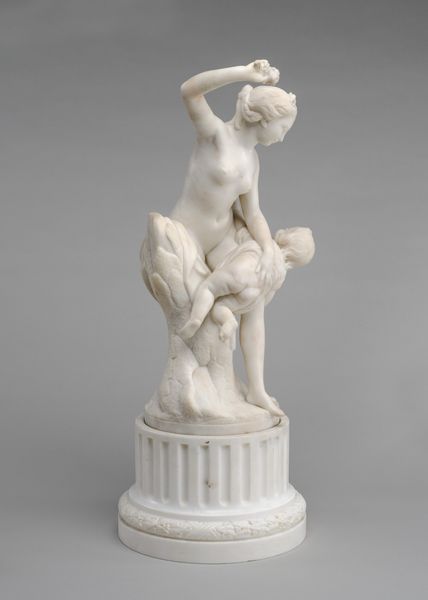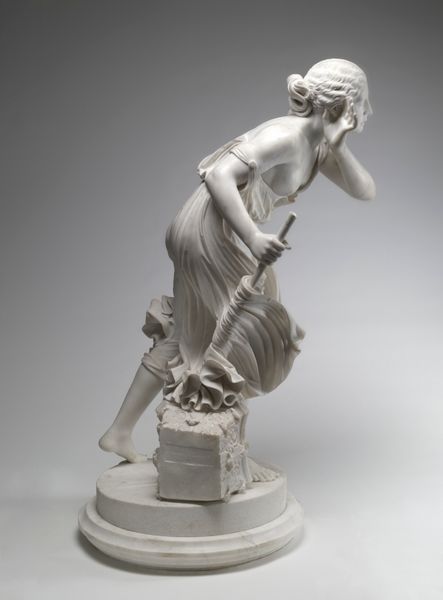
sculpture, marble
#
neoclacissism
#
allegory
#
sculpture
#
figuration
#
sculpture
#
decorative-art
#
marble
#
erotic-art
Dimensions: Height: 15 3/4 in. (40 cm)
Copyright: Public Domain
Curator: Here we have "Bacchante Riding a Goat," a marble sculpture created in 1796 by Philippe Laurent Roland. It resides here at the Metropolitan Museum of Art. Editor: Well, hello there, frisky. The first thing I notice is the sense of playful abandon, a real Dionysian vibe. I feel like I’ve stumbled upon a secret party. The bacchante seems completely in her element. Curator: Roland was working squarely within the Neoclassical movement, drawing inspiration from antiquity. He actually specialized in portrait busts of prominent figures, but this strays quite a bit from sober likenesses, doesn't it? Editor: Oh, totally! Those marble Romans could learn a thing or two from this wild child. It's fascinating to see that controlled classicism mixed with a healthy dose of… goatishness, if you will. Curator: This sculpture exemplifies the period's interest in allegory, eroticism, and decorative art. Bacchantes, as followers of Bacchus, represented freedom, ecstasy, and even a kind of blissful madness, a real counterpoint to reason. Editor: And she’s riding a goat! Not a noble steed or a prancing Pegasus, but a goat, that symbol of earthly desires and a kind of untamed energy. The goat is sculpted with such…gusto, a thick swirling coat contrasting the smooth lines of the bacchante herself. Curator: Exactly, the juxtaposition is what makes it so compelling. The delicate rendering of her drapery, the soft curve of her exposed leg… juxtaposed against the, shall we say, earthier texture of the goat's fur, the tension between control and release, intellect and raw instinct. It speaks volumes about the era's complex relationship with classical ideals and forbidden passions. Editor: It makes me think about art as a stage for those inner battles. Roland lets us peek behind the curtain of decorum to glimpse the chaotic impulses underneath. It is really exciting. Curator: Absolutely. Roland captures a moment of unrestrained joy, a defiance of social constraint—perhaps reflecting some of the social upheavals happening in France at the time. It also has an incredible texture and depth of field for such a small, simple piece of artwork. Editor: I love that we are reminded to embrace our inner wildness, the part of us that wants to dance with goats in the forest. Curator: An enduring sentiment and expertly represented here.
Comments
No comments
Be the first to comment and join the conversation on the ultimate creative platform.
